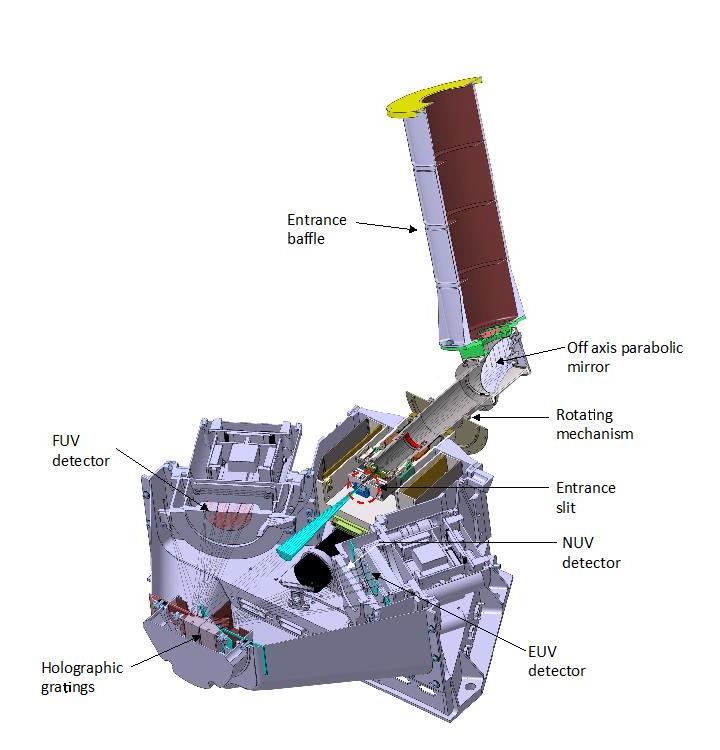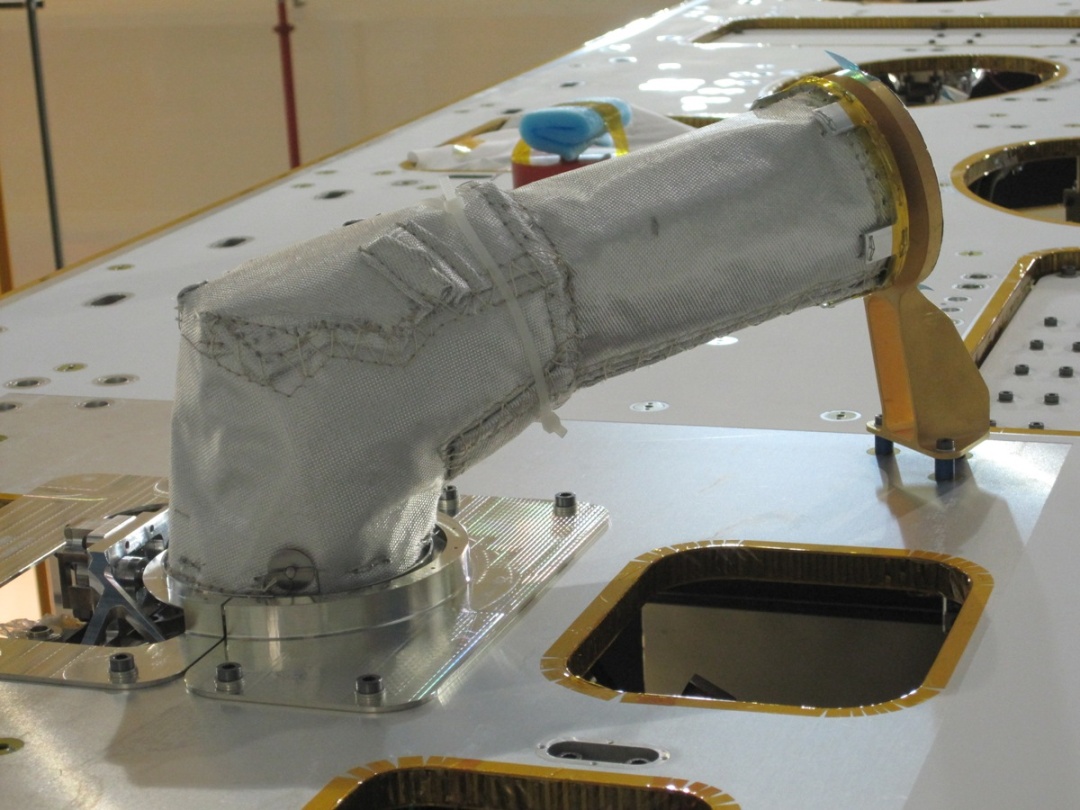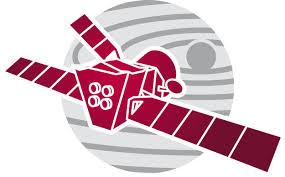PHEBUS - BepiColombo
phebus
probing of hermean exosphere by ultraviolet spectroscopy
PHEBUS uses UV emission from Mercury's exosphere to characterise its composition, structure and dynamics, and surface-exosphere connections. PHEBUS is a FUV-EUV spectrometer working in the wavelength range from 55 to 330 nm and devoted to the characterisation of Mercury's exosphere composition and dynamics. Two gratings and two detectors are used according to a special, innovative, compact design. A one degree-of freedom scanning system allows probing, at the highest possible signal to noise ratio, selected regions and altitude ranges of interest.
science goals
The general scientific objectives of PHEBUS, oriented toward better understanding of the coupled surface-exosphere-magnetosphere system may be summarized as follows:
Determination of the composition and vertical structure of the exosphere including previously undetected species
- Characterisation of the exospheric dynamics
- Day to night circulation, active to inactive regional transport
- Study of surface release processes
- Identification and characterisation of the sources of exospheric constituents
- Detection and characterisation of the ionosphere and its relation with the neutral atmosphere
- Space and time monitoring of exosphere/magnetosphere exchange and transport processes
- Study and quantification of escape, global scale source/sink balance and geochemical cycles
Additional scientific objectives, like the search for surface ice layers in permanently shadowed regions of high-latitude craters, and optionally the measurement of reflectance UV signatures of ferrous iron in the regolith, are also within the scope of instrument objectives.
All of these objectives can be completed by PHEBUS alone, but can be synergistically enhanced by measurements from other experiments of BepiColombo (MSASI, MPPE on MMO; MIXS, SERENA on MPO). Night side observations of the surface using the interplanetary H Ly-alpha glow are also planned, to investigate the surface ice layers in the high-latitude craters. Additional science objectives relate to heliospheric and solar physics and include studies of the interaction of interstellar gas with the solar environment, solar coronal emission lines, stellar physics (hot UV stars) and UV observations of comets and small bodies in the inner heliosphere.
measurement principle
The instrument is composed of two Ultra-Violet spectrophotometers and one scanning mirror (one axis rotation). A movable mirror will take the light from the exosphere above the limb onto the entrance slits of the spectrometers with a minimum of reflections in order to maximize the UV count rate of MCP detectors.
The EUV (Extreme Ultra Violet) spectrograph has covers a spectral range of 55-155nm which allows it to catch second order lines in the 25-50 nm range. It is optimized for the full spectrum of expected lines in such a way that there is minimum overlap. The second spectrometer is called FUV for Far Ultra Violet with a spectral range of [145-315nm] with an extension at 404 and 422 nm (called the NUV lines for Near Ultra Violet). Together they yield a spectral resolution of 1nm.
PHEBUS receives the UV emission through a baffle, mounted through the radiator at an angle of 10º and can rotate by 360º in one plane. This allows one-degree of freedom in pointing, enabling scanning of selected regions and altitude ranges of interest. The slit (see figure) is parallel to the local horizon and perpendicular to the velocity vector of the spacecraft. Two sets of gratings and detectors can be used individually or together, depending on the SSMM storage/bandwidth available for PHEBUS. Different modes of observation consist of scanned or fixed pointing observations of different regions of interest, e.g. vertical scans, along-orbit scans, grazing observations at twilight, etc.

During the mission, the instrument will be regularly calibrated on well-chosen stars, in such a way as to quantitatively determine the Micro Channel Plate efficiency due to a continuous degradation of the detectors. This may require some off-pointing of the spacecraft as EUV stars are common but FUV stars are less readily available.


Mounted on the radiator and facing into the parking bracket.
A consortium composed of three main partners implements it. Tohoku University (Japan) will provide the detectors and the main entrance mirror, IKI (Russia) will implement the scanning system, and SA/IPSL (France) will take in charge the design, assembly/ test/ integration, and will also provide three small detectors (zero order monitor, Ca and K channels). Finally, a small optional spectro-imager (0.3 kg), implemented under the responsibility of Southwest Research Institute (USA), is proposed for UV mapping purpose.
LINK TO SCIENCE DATASETS - COMING SOON
LINK TO USER MANUAL
- Removed a total of (4) style text-align:center;









































 Sign in
Sign in
 Science & Technology
Science & Technology